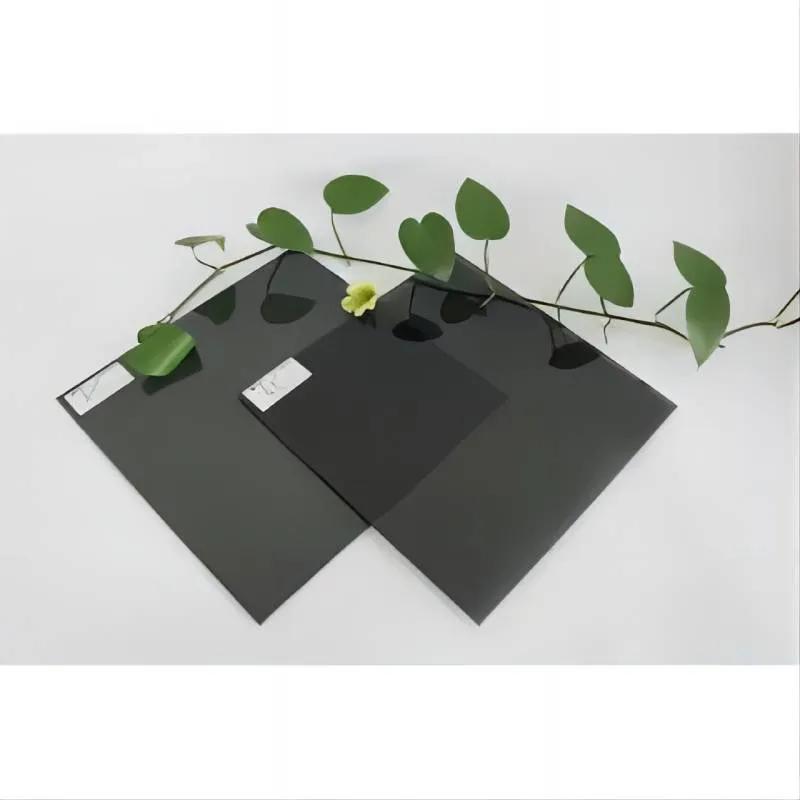Understanding Tempered Glass Varieties
Tempered glass, also known as toughened glass, is a type of safety glass that undergoes a special heating and cooling process to increase its strength. This treatment not only enhances its durability but also makes it more resistant to thermal stress. Due to these properties, tempered glass is employed in various applications ranging from architecture to automotive industries. In this article, we will explore the different varieties of tempered glass and their uses.
1. Clear Tempered Glass
Clear tempered glass is the most common variety used in residential and commercial applications. It is favored for its optical clarity and high strength, making it ideal for doors, windows, and partitions. The transparency of this glass allows ample light to pass through, contributing to an open and inviting space. Furthermore, clear tempered glass can withstand significant thermal stress, making it suitable for environments that experience temperature fluctuations.
2. Frosted Tempered Glass
Frosted tempered glass is created by sandblasting or acid etching clear tempered glass to create a translucent finish. This variety is widely used for privacy applications such as bathroom windows and office partitions. The frosted surface diffuses light while maintaining a degree of privacy, making it an excellent choice for settings where visibility needs to be minimized. Additionally, frosted tempered glass retains the strength and safety characteristics of its clear counterpart, providing an ideal balance between aesthetics and functionality.
3. Tinted Tempered Glass
tempered glass variety
Tinted tempered glass is produced by adding metal oxides to the glass during manufacturing, resulting in various shades such as bronze, gray, or blue. This variety is not only aesthetically pleasing but also serves practical purposes by reducing glare and controlling heat gain within buildings. Tinted tempered glass can significantly enhance energy efficiency, making it a popular choice for commercial buildings and large windows, where sunlight can contribute to excessive heat buildup. Additionally, some variants of tinted glass also offer UV protection, safeguarding both indoor furnishings and occupants from harmful rays.
4. Laminated Tempered Glass
While technically not a type of tempered glass on its own, laminated tempered glass combines the strengths of both laminated glass and tempered glass. This variety consists of two or more layers of tempered glass bonded together with a layer of interlayer material, often made of polyvinyl butyral (PVB). The result is a stronger, safer product that offers enhanced protection against shattering and break-ins. Laminated tempered glass is frequently used in high-security applications, such as storefronts and perimeter glazing, where safety is a primary concern. Its ability to hold together when shattered makes it a popular option in environments that require additional security.
5. Colored Tempered Glass
Colored tempered glass features a vibrant aesthetic due to the addition of color pigments during the manufacturing process. Available in various colors, this glass is often used in decorative applications, such as glass facades, shower enclosures, and architects’ designs that seek to bring a splash of color into buildings. In addition to aesthetic appeal, colored tempered glass retains the strength and resilience typically associated with tempered products.
Conclusion
Tempered glass varieties are diverse, each serving unique purposes while ensuring safety and durability. From clear and frosted to tinted, laminated, and colored options, the versatility of tempered glass makes it a remarkable choice for both functional and decorative applications. As technology advances, the production methods and applications of tempered glass will likely continue to evolve, providing even more innovative solutions in architecture, design, and safety. Understanding the different varieties allows consumers and architects to make informed choices matching their specific needs, leading to safer and more aesthetically pleasing environments.
 Afrikaans
Afrikaans  Albanian
Albanian  Amharic
Amharic  Arabic
Arabic  Armenian
Armenian  Azerbaijani
Azerbaijani  Basque
Basque  Belarusian
Belarusian  Bengali
Bengali  Bosnian
Bosnian  Bulgarian
Bulgarian  Catalan
Catalan  Cebuano
Cebuano  Corsican
Corsican  Croatian
Croatian  Czech
Czech  Danish
Danish  Dutch
Dutch  English
English  Esperanto
Esperanto  Estonian
Estonian  Finnish
Finnish  French
French  Frisian
Frisian  Galician
Galician  Georgian
Georgian  German
German  Greek
Greek  Gujarati
Gujarati  Haitian Creole
Haitian Creole  hausa
hausa  hawaiian
hawaiian  Hebrew
Hebrew  Hindi
Hindi  Miao
Miao  Hungarian
Hungarian  Icelandic
Icelandic  igbo
igbo  Indonesian
Indonesian  irish
irish  Italian
Italian  Japanese
Japanese  Javanese
Javanese  Kannada
Kannada  kazakh
kazakh  Khmer
Khmer  Rwandese
Rwandese  Korean
Korean  Kurdish
Kurdish  Kyrgyz
Kyrgyz  Lao
Lao  Latin
Latin  Latvian
Latvian  Lithuanian
Lithuanian  Luxembourgish
Luxembourgish  Macedonian
Macedonian  Malgashi
Malgashi  Malay
Malay  Malayalam
Malayalam  Maltese
Maltese  Maori
Maori  Marathi
Marathi  Mongolian
Mongolian  Myanmar
Myanmar  Nepali
Nepali  Norwegian
Norwegian  Norwegian
Norwegian  Occitan
Occitan  Pashto
Pashto  Persian
Persian  Polish
Polish  Portuguese
Portuguese  Punjabi
Punjabi  Romanian
Romanian  Russian
Russian  Samoan
Samoan  Scottish Gaelic
Scottish Gaelic  Serbian
Serbian  Sesotho
Sesotho  Shona
Shona  Sindhi
Sindhi  Sinhala
Sinhala  Slovak
Slovak  Slovenian
Slovenian  Somali
Somali  Spanish
Spanish  Sundanese
Sundanese  Swahili
Swahili  Swedish
Swedish  Tagalog
Tagalog  Tajik
Tajik  Tamil
Tamil  Tatar
Tatar  Telugu
Telugu  Thai
Thai  Turkish
Turkish  Turkmen
Turkmen  Ukrainian
Ukrainian  Urdu
Urdu  Uighur
Uighur  Uzbek
Uzbek  Vietnamese
Vietnamese  Welsh
Welsh  Bantu
Bantu  Yiddish
Yiddish  Yoruba
Yoruba  Zulu
Zulu 

